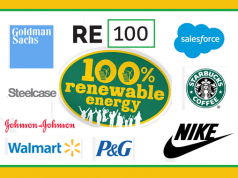
INTRODUCTION
The World Health Organization forecasts that climate change is expected to cause around 250,000 deaths per year between 2030 and 2050.[1] Human-induced warming reached approximately 1°C (likely between 0.8°C and 1.2°C) above pre-industrial levels in 2017, increasing at 0.2°C (likely between 0.1°C and 0.3°C) per decade.[2] Numerous efforts are being channeled towards reducing and offsetting Greenhouse Gas (GHG) emissions identified as the major cause of climate change. Those efforts are simply commitments made by the parties to combat climate change. For example, the Paris Agreement[3] contains commitments by participants to reduce climate impacts and limit the average global temperature rise to as close as possible to 1.5 degrees Celsius. The Under2 Coalition[4] also brings together over 200 governments committing to reduce their GHG emissions toward net-zero by 2050. The importance of commitments as a first step to a Climate Neutral result was emphasized by Miguel Alejandro Naranjo Gonzalez of UN Climate Change as follows:
“The fact that Forest Green Rovers as a relatively small club has joined the Climate Neutral Now initiative demonstrates that everyone can score goals for climate action. Such action requires first and foremost a commitment to sustainable lifestyles and not necessarily a big budget.”[5]
WHY THE SPORTS INDUSTRY
Sport contributes to climate change but it is in a unique position to be a part of the solution for several reasons. First, its broad social platform makes it a strategic tool in influencing people’s attitudes; its reach extends to almost all geographical areas and social backgrounds.[6] Second, sport can play an important role in educating and raising awareness towards global warming and more broadly environmental issues, including promoting a healthy, sustainable lifestyle.[7] Third and very importantly, sport is increasingly recognized as a low-cost high impact tool to reach sustainable development, including addressing global warming.[8] Finally, the incorporation of sustainability standards in the sport industry can have a ripple effect, contributing to sustainable production and consumption standards in other industries.[9]
BACKGROUND
As important as pledges or commitments are though, there is a long bridge between that crucial first step and actual climate neutrality. This bridge stands on components like values, institutions, policies, regulations, politics, the market, utilities, finance, technology, enforcement mechanism and implementation. All these components are at different levels of success globally, regionally, nationally and sub-nationally thereby resulting in different outcomes with respect to the final implementation of pledges.
As a result of those stated differences, strengthening the bridge in the context of a global climate framework requires the central application of climate justice and climate equity. Climate change represents itself as a problem of justice originated from the uneven distribution of its adverse effects on countries and generations, different contributions to GHG emissions, and uneven capabilities to deal with the consequences.[10] Equity plays a role in designing any international climate change regime and shaping obligations.[11] Equity in the climate change context is usually invoked to address a group of injustice issues like distributive justice, corrective justice, procedural equity and intergenerational equity.[12]
There is the need for a thorough consideration of the pledgees, pledges and the process of implementation of goals of the United Nations Climate Change Sports for Climate Action (UNCCSCA) – an initiative which invites sports organizations and their stakeholders to join a new climate action for sport movement and to engage together in the climate neutrality journey.[13] The UNCCSCA’s objectives include: achieving a clear trajectory for the global sports community to combat climate change through commitments and partnerships according to verified standards, including measuring, reducing, and reporting GHG emissions in line with the well below 2 degrees scenario enshrined in the Paris Agreement; and using sports as a unifying tool to federate and create solidarity among global citizens for climate action.[14] The UN Climate Change facilitates and coordinates the initiative within its resources and mandates. Many signatories have already started this process by mapping out their own GHG emissions, setting concrete goals and net-zero targets, and communicating and advocating for 1.5 degrees Celsius ambition on a global scale.[15] Three years after the launch of the UNCCSCA, pledgees are now requested to commit to achieving specific climate goals and halving emissions by 2030 and aiming to achieve net zero by 2040.[16] The UN Climate Change focuses presently on the 2030 goal but will work with the pledgees to determine the best course of action for achieving net zero by 2040.
WAY FORWARD
For the bridge between the UNCCSCA pledges (2030 and 2040) and climate goals to be strengthened climate justice and climate equity should be centrally applied to all the processes of the UNCCSCA based on the international environmental law principle of Common but Differentiated Responsibilities and Respective Capabilities (CBDR-RC). The CBDR-RC is a principle within the UN Framework Convention on Climate Change (UNFCCC) that acknowledges the different capabilities and differing responsibilities of individual countries in addressing climate change.[17] While participation from the global south is very low, it is also highly unlikely that the very few UNCCSA pledgees from the global south will meet either the 2030 or 2040 targets due to the fragile state of the components that make up the bridge. As a result, responsibility for the a very important component like finance or costs entailed in transiting to climate neutrality, particularly for sports actors in the global south with very low per-capita emissions and very little access to finance has to be revisited.
SUGGESTIONS
With the prevalence of green washing and sportwashing, it is important that policies aimed at climate governance are effective, efficient and equitable. Effectiveness can be attained by introducing a regional structure to the existing UNCCSCA framework where similar climate governance policies are adopted in response to similar adverse climate effects. This can minimize carbon leakage within the region and also introduce a “subtle legal constraint” borne out of similarities in circumstances and proximity. This in turn will ease the efficiency determining process.
There is a need for the establishment of a UNCCSCA Fund to assist most vulnerable, underdeveloped and developing pledgees in implementing policies formulated towards attaining their goals. Funds disbursed through this initiative should be monitored by the Fund in collaboration with the particular regional structure where the benefiting entity is situated.
While we celebrate the global enthusiasm displayed by the UNCCSCA, it is desirable that we stop for a minute to measure in real terms what progress has been achieved, and how effective, efficient and equitable the framework is.
*Ayodele Babalola is the Lead Counsel at AOB Willows LP, Abuja, Nigeria. He is an experienced Lawyer with a Master of Laws degree (LL.M) from the University of California, Berkeley where he specialized in Environmental & Energy Law and Public Law.
[1] World Health Organization, Climate Change and Health, <https://www.who.int/news-room/fact-sheets/detail/climate-change-and-health> accessed on 13/5/2022
[2] IPCC Special Report
[3] Adopted 12 December 2015, entered into force 4/11/16
[4] The Climate Group, <https://www.theclimategroup.org/project/under2-coalition> accessed on 9/7/18
[5]UN Climate Change, Football Club Leads with Climate Neutral Pledge, (1 August 2018) <https://unfccc.int/news/un-certifies-first-ever-climate-neutral-football-club> accessed on 8 August 2018
[6] Ms. Daniela Bas, Ms. Pegah Zohouri Haghian, Dr. Suki Hoagland, Addressing Climate Change Through Sport, 2/2/22, <https://www.un.org/development/desa/dspd/2022/02/addressing-climate-change-through-sport/> accessed on 2/12/22
[7] Id
[8] Id
[9] Id
[10] Rosa Manzo, Climate Equity or Climate Justice? More than a question of terminology, IUCN, March 2021, <https://www.iucn.org/news/world-commission-environmental-law/202103/climate-equity-or-climate-justice-more-a-question-terminology> accessed on 30/5/22
[11] Id
[12] Id
[13] <https://unfccc.int/climate-action/sectoral-engagement/sports-for-climate-action> accessed on 12/6/23
[14] Id
[15] Id
[16] Id
[17] The principle of CBDR-RC is enshrined in the 1992 UNFCCC treaty reads: “…the global nature of climate change calls for the widest possible cooperation by all countries and their participation in an effective and appropriate international response, in accordance with their common but differentiated responsibilities and respective capabilities and their social and economic conditions.”




